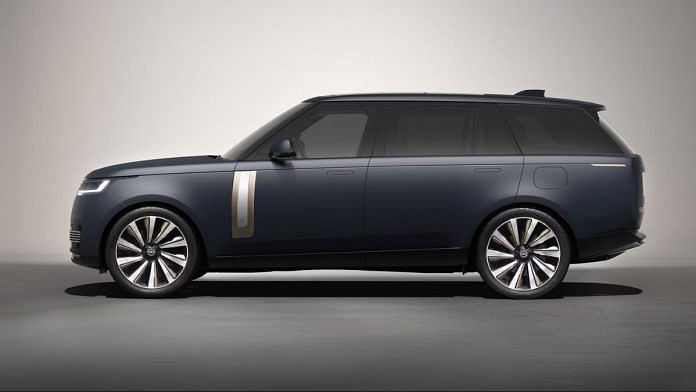The past couple of days have been a bit of a news whirlwind, and the 72-point-size headline screams: ‘Tariffs’. After Donald Trump’s latest tantrum against India — imposing a 25 percent tariff on Indian exports to the United States, with exceptions for items like smartphones, pharmaceuticals, and guar gum — and calling the Indian economy “dead”, I read a joke on X: that there should be a 75 percent tariff on everyone who claims to be a tariff expert.
I will admit straightaway that I am not a tariff expert. But I do understand the automotive industry and how tariffs work in that space. Trump’s outburst came just days after India signed a landmark Free Trade Agreement with the United Kingdom. The agreement will mean cheaper Scotch and cheaper Rolls-Royces as well. In fact, following the deal signed by Narendra Modi and Keir Starmer, it was this second point that dominated my social media timelines.
So what do we know about these tariff reductions and what they mean for Indian industry?
FTA brings down duties
When I called up some car companies to find out, they all told me the same thing: “Our tax lawyers and chartered accountants are still trying to make sense of it all.” At the same time, the import duty cuts come with quotas, and there are a couple of serious little snags. Chief among them: automotive manufacturing in the United Kingdom has almost died out.
For example, cars with petrol engines larger than 3,000cc and diesel engines over 2,500cc will see duties drop significantly, from 110 percent to just 30 percent. But such high-capacity vehicles are made by very few companies these days, and their sales are extremely limited. Take Volkswagen-owned Bentley Motors, which sold just 64 cars in India in 2024, according to one report. And while Bentley is expanding in India and the number of Ultra High Net Worth Individuals (UHNWIs) is rising, even the most “affordable” Bentley—the Bentayga SUV—costs Rs 5 crore. A 30 percent duty could bring that down by a crore or slightly more. So yes, you still have to be ‘silly rich’ to afford one.
But what about Tata Motors–owned Jaguar Land Rover (JLR)? Well, here’s the funny thing. Just last year, Tata started assembling the Range Rover in Pune using kits from Solihull, UK. And the Defender — the most popular show-off SUV for the rich and famous — is currently made at JLR’s plant in Nitra, Slovakia. Even those vehicles might soon be assembled in Pune. As for Jaguar, they’re not making any cars right now. When they restart, it will be as a luxury all-electric brand.
So I don’t foresee the massive 19,000-unit low-duty quota (in year five) for such large vehicles being filled anytime soon. There’s another important factor being overlooked: India’s push toward lower-capacity engines due to Corporate Average Fuel Efficiency (CAFE) norms. Larger engines are powerful and fun to drive, but they naturally consume more fuel. Personally, I believe India will shift towards 1.5-litre turbocharged petrol engines in strong and plug-in hybrids. There’s also a duty cut for electric vehicles, but only for those priced above £40,000.
Interestingly, there is also a duty cut on smaller-capacity engines. These vehicles previously attracted a 66 percent duty, which will now drop to 50 percent, and eventually to 10 percent by year five — again, with strict quotas. But given that very few manufacturers of small cars remain in the UK, this duty cut might only benefit Mini (owned by BMW) and Nissan. There’s another catch: at least 35 percent of the vehicle’s value must be produced in the UK.
Chance for India to gain
This rule also applies to high-end, large-engine vehicles — and this is where arcane bureaucracy kicks in. Take Rolls-Royce, for example. Much of its mechanical engineering is shared with top-end BMWs, since BMW owns the brand. Rolls-Royce, of course, handles the “coachwork,” but how do you classify hand-stitched bespoke seats or hand-painted pinstripes? Thankfully, McLaren Automotive — a division of the Formula 1 team — is still a mostly British manufacturer. But they’ve sold only 50 supercars in India as of January 2025, since opening shop in 2022.
Given how Indian excise authorities love taking carmakers to tax court, this will be debated intensely. Incidentally, the same issue applies to Mini, which shares mechanical components with the BMW 2 Series, made in Leipzig, Germany. Nissan might benefit the most, but they’re not exactly setting the Indian market on fire right now. And because the duty cuts are gradual — with the full impact kicking in only by year five — a sensible buyer might just wait a couple of years before taking advantage.
Here’s what I clearly believe: because the UK is no longer an automotive manufacturing powerhouse, the impact of the FTA on India’s automotive sector will be limited. In fact, it could benefit Indian automotive exports to the UK more — since they too will see duty reductions (starting year six of the deal) — than the UK’s exports to India. While Tata Motors hasn’t made any announcements, it’s unlikely they’ll abandon their Pune assembly plant. However, reduced duties might make special editions — like the souped-up SVR line — cheaper to import.
Now, when the India–EU FTA is signed… that could be a different kettle of fish. Because the European Union is still an automotive manufacturing powerhouse.
Kushan Mitra is an automotive journalist based in New Delhi. He tweets @kushanmitra. Views are personal.
(Edited by Prashant)






